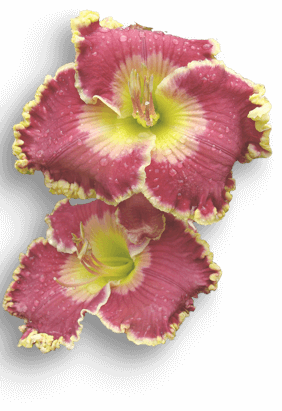October 02, 2018
Proliferations...My Way
By Lee Pickles, Hixson, TN
I have mentioned several times in my writings about proliferations and several of you have asked how I handle them and since there are as many ways to handle prolifs as there are AHS members . . . thus, the title, “Proliferations . . . My Way”. [Fall] is a good time in most areas of the U.S. to check your cultivars for proliferations, which are miniature plants that you will occasionally find growing from a bract area of a daylily scape. These proliferations will be exact replicas of the mother plant.
At this point you have several options:
1. If the scape is still green, leave the prolif on the scape to encourage some root growth prior to removing. The scape will eventually start turning brown, but if you will look closely, you will still have a “live” green area coming up from the crown of the plant to the prolif. When this area turns brown, you need to remove the prolif.
2. If the prolif is already well rooted, it can be removed. (Planting alternatives will be discussed next). If you remove the prolif, leave some scape below the bottom of the baby plant to stabilize when planted. If the scape still has seed pods, it is best to wait until
they have been harvested to remove the proliferation.
3. I would cut the foliage back as soon as the prolif is harvested so the plant does not have to try to support all the extra foliage. If it is a small prolif, you may want to cut it back to about 2″, and leave the length on larger ones about 4″.
4. If you get nervous and for some reason want to remove the prolif prior to the roots starting, cut the scape 2-3 inches below the prolif, and insert into a container of water, with the water covering the bottom of the prolif. I use Dixie plastic cups (appropriate for a Southerner). Also, I use a very weak solution of a water-soluble fertilizer, like 20-20-20. Check the water often and maintain the original level. It is also recommended to change the water every couple of days. Another method of encouraging roots is to have a box filled with sand, insert the proliferations in the sand and keep it moist. [Whichever method is used, do not allow the roots to dry out. – Ed.] Remember to label the prolif . . . our memories are not as good as we sometimes think, and when you are working with several proliferations, you can easily become confused! Thus, CRS is a good excuse!!!
After the root system has developed, you have some planting options:
1. Place the prolif directly in the ground beside the mother plant. You do need to remember to keep the area moist.
2. My personal preference is to place the prolif in a 4″ pot filled with potting soil for at least a month and then plant directly in the garden. [See item 4 below- Ed.]
3. When planting in any location, I would recommend trimming the foliage back to 1 1/2″ to 2″ (I believe that has been referred to as scalping), and dust the base and roots with Rootone (or some other rooting agent) which has a growth stimulator plus a fungicide. Do not let the planting medium dry in the initial growth.
[4. In the north, mulch the prolif well or grow in a protected cold frame. -Ed.]
Note: If you are selling or trading plants, it is best to allow the plant to bloom before selling or trading, that way, you will know that you have not gotten them mixed up. If you do rid yourself of the plant before blooming, ethics would dictate to inform the other person that this is a proliferation. After it has bloomed, and you have determined that it is the right plant, then it is like any other division of that cultivar.
[Reprinted from AHS Region 4 Fall ’96/Winter ’97 Newsletter…with permission.]
The American Daylily Society

